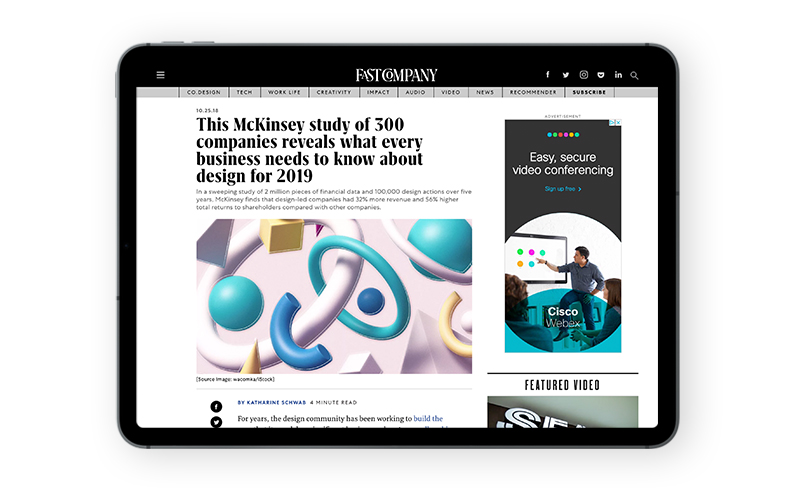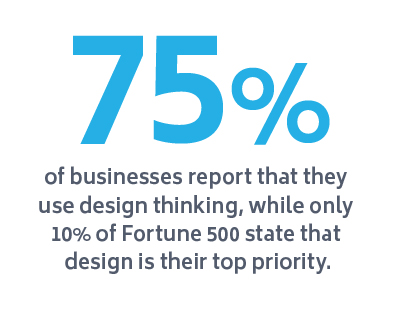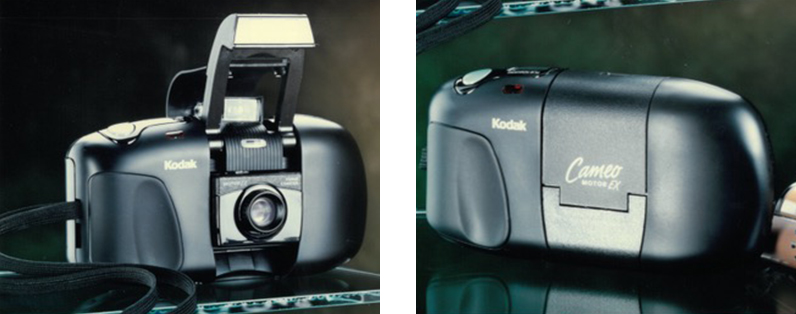Tangents
What You Need to Know About Industrial Design and Design Thinking in 2019 (Part 1)
By Joe Schappler

[wtr-time]
As our first post of the year covering our perspective on Industrial design, we wanted to take a look at one area that is getting a lot of coverage right now: Design Thinking.
Historically—and for the most part still today—companies have looked at two things when deciding whether to start a road map towards developing a new product:
First, is it viable? Do we have the technology so we can create it?
Next, they question whether the product is feasible. Is there a business case around this product that says we’re going to be successful and make a profit on this?
Often, these were the only two aspects of a potential product they looked at.
Today, instead of just being viable and feasible, it now has to be viable, feasible, AND desirable. It’s a game changer when you can address all three. This whole idea of understanding what the user wants, and can benefit from, has been around for many decades, but has been gaining traction in recent years and benefiting users and the companies both.
Before we look at FastCompany’s article on industrial design and design thinking, let’s take a quick step back and look at where the industry is.
It’s 2019 and Companies are Still Wrestling with Design Thinking
While 75% of businesses report that they use design thinking, only 10% of Fortune 500 state that design is their top priority.
Why? Corporate America is very slow to change. They are in love with a very rigid process of phases and gates, where you go through and check off boxes to get approval, and budgets, for the next phase. That’s been the hard and fast way of product design and development forever.
Design thinking throws a wrinkle in by bringing in a new element, the user, that they’ve never had to deal with in their phase and gates process before. (To be fair, sometimes companies introduce design thinking in the early stages of product development, but then quickly forget and just move on down the line). A check the box approach.
Design Thinking As Part of Industrial Design
Looking back to the early 90s when we first started Helix Design, there was a lot of focus on designing for traditional film cameras. Because we have a lot of experience with smaller electronic ergonomic handheld products, we ended up working on a number of amazing camera projects with the Kodak team.
One project that really stood out in the market was our design for the Kodak Cameo. This wasn’t the age of digital yet, so the parameters around camera design were limited to taking a roll of film and put a material thickness on each side.
That was the driving constraint for the product and driven by the user’s need for a smaller, more compact design that is easily carried.
What we found with through consumer research was the cameras at the time were rectangular, bulky, and difficult to carry around without a case and a strap. You remember the old pictures, with everybody walking around with cameras hung over their necks.
Kodak was trying to create a paradigm shift to get away from these big bulky cameras and make a camera small enough that people would want to carry it with them. Effectively, a path for using more film while delivering memories for the users.
The camera we designed was created specifically to fit in small pocketbooks for women and easily fit into pockets. The form of the camera is designed to slide in and out of a pocket easily.
In fact, for the time, it did a couple of pretty amazing things beyond slipping in and out of your pocket or purse easily. It provided a built-in case so there was no need for an additional case to protect the lens and the viewfinder, which added unnecessary size. The unique flip-up flash/viewfinder also reduced red-eye by creating a separation between the lens and the flash, while reducing user errors of inadvertently putting one’s hand over the flash while picture-taking.
The camera was a huge success for the company. They retooled it multiple times and it was one of the best selling cameras in Kodak’s history. It was a game changer for the market.
What Makes Industrial Design/Design Thinking Work?
The big change was that in the traditional industrial design process, engineers would design the electronics, and then hand it over to designers just to put a pretty package around it.
This project was driven the other way around. It was driven by the user experience for desired picture-taking, so it was driven by industrial design and supported in parallel with engineering to “make it fit,” which was a significant change in thinking at that time.
This was the early days of design thinking and it didn’t really get much traction even as a concept in industrial design until well into the 2000s. There were a few trying to do it but it wasn’t wide-spread. Even today, I would say it still has not become the norm yet in many businesses.
The McKinsey Study on the Business Value of Design
The change that’s happening now is that companies are trying to get the user involved in design from the outset right up through the release of the final concept. You’re seeing designers try to do more user testing and ethnographic research, which is observational analysis of the users in their own environment. This just really wasn’t done early on. It’s getting more and more emphasis now, as the article pointed out.
The companies that are paying attention to this are seeing it in the bottom line. But even at Helix, I would say we have maybe10% of our customers that are interested in doing design research. It’s still slow to take hold because it’s difficult to put metrics around to measure outcomes. It is hard to define it because industrial design is only one piece of the puzzle in getting something to the market.
Digging in though, there were four key pieces of the article:
- Metrics. This is probably one of the more difficult areas for most design firms to get their hands around because they’re just not doing a lot of analytics, and maybe don’t know how to do it with current resources.
- Putting users first. That’s where the ethnographic research of observing consumers using the product in their actual environment. You bring empathy into the situation by seeing the world through the eyes of others instead of just how you see the world. You’re gathering this insight to be inspired and develop a story to tell for a successful design. All designers need to build a story around the product idea that is based on understanding the company’s needs, viability and feasibility, and the users needs of desirability.
- Put designers in cross-functional teams. You are seeing a lot more of that today where even design firms are hiring psychologists, software engineers and others. They know ideas come from anybody and working together now in this cross-functional way leads to more successful innovation. Also, because technology is such a big part of so many projects today, you need all those different technical specialists. That was one of the reasons we’ve partnered with Resolution Development Services: we could have more of that cross-functional capability to serve our clients better.
- Encouraging research and early stage prototyping. I’m a very big proponent of the fail often, succeed sooner model. We do that here at Helix. When you prototype, you learn. There’s one thing they didn’t focus on in this article and it’s important to design success. You have to empower every person at every level to make decisions. When you do that you can gain an incredible amount of insight in a short amount of time and while you may sometimes fail at that decision, you can uncover some amazing solutions. At Helix, we believe in prototyping early and frequently.
Wrapping Up
Many industrial designers and product designers are trying to put a number on the value of design in business. This would help define development outcomes by having a way to measure success. As designers, we understand the value of design to success. It’s encouraging to see corporations beginning to understand the benefit as well.
The takeaway is leaders in corporate America need to realize design thinking should be a priority because it won’t work if not led from the top. You have to have a champion high up within the C-level of a company to actually create this meaningful change. We hope that companies look at this seriously, and make the necessary cultural changes, to realize that understanding the user’s desires, and involving the user in the design process, is going to produce better profits—and better solutions for their customers.
About Helix Design
Helix Design is an industrial design firm and product design company that delivers creative design and mechanical engineering solutions to companies who need external perspectives combined with practical experience. For samples of our recent work, please visit our industrial design portfolio.
Do you need industrial design guidance for your next project?
Contact us for an assessment today.





